Dvorak (5)
Antonin Dvorak
1. Rusalka (Mp4)
435 MB
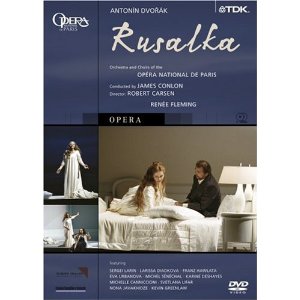
Rusalka: Eva Jenisová, The Prince: Vladimír Hriško, The Water Sprite: Peter Mikuláš, The Witch: Marta Beňačková, The Foreign Princess: Anda - Louise Bogza Orchestra, Ballet and Choir of the National Theatre Opera Jiří Bělohlávek - conductor Live on 3rd October 1998 at the National Theatre, Prague
The lyrical fairy-tale opera Rusalka, which was premiered in 1901, is Dvořák’s most popular opera. It tells the story of a water nymph who falls in love with a Prince, and out of love for him longs to become mortal even at the cost of pain and dumbness. She is willing to sacrifice her life and refuses to redeem herself by killing the Prince when he forsakes her for another woman. Despite the fairy-tale setting and characters, the story is mostly about human sentiments and the price of true love.
Eva Jenisová was born in Slovakia. Her engagements as a soloist include the National Theatre in Bratislava, the Viennese State Opera, the Giuseppe Verdi Theatre in Trieste, Theatre du Chatelet in Paris, Nancy, London, and Curych. She has also performed to high acclaim at numerous international festivals and given concerts in all major European cities. She has become famous as The Cunning Little Vixen, Káťa Kabanová, Rusalka, Violeta in La Traviata and Mariken in Jeux de Marie by Martinů, to name just a few of her most important parts.
Vladimir Hriško was born in Kiev in the Ukraine. Shortly after his studies he became a soloist in the State Academic Theatre of Opera and Ballet in Kiev and performed in other theatres and at international festivals, too. In the early 90s he left for the United States to perform in the New York City Opera. He has also appeared in major operatic parts in Cincinnati and Washington and has regularly returned to the Metropolitan Opera, St Petersburg, Verona and the Bastille. His extensive repertoire includes the parts of Alfred (La Traviata), Rudolf (La Boheme), Pinkerton (Madama Butterfly), the Duke (Rigoletto) and many others.
download: solidfiles anonfiles yandex 4shared mediafire mega filecloudio
2.Symphony No.9 ‘From the New World’ (Mp4)
189 MB
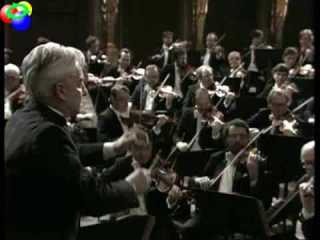
I. Adagio, Allegro molto,
II. Largo,
III. Scherzo: Molto vivace — Poco sostenuto,
IV. Allegro con fuoco.
Vienna Philharmonic
Herbert von Karajan - conductor
The Ninth Symphony was completed early in 1893, which was fast work by anybody’s standards. Apparently he intended it as a tribute to his generous hosts, though judging by the title he gave it, From the New World, it also contained a message to his folk back home. What would that “message” be? Well, nowadays people always seem to point to the smashing tunes, the pulsating rhythms, and the vivid colours. We seem to see only the bright lights of this music, and gloss over the dark corners. But if we open our ears just that bit more, think ourselves into “back then”, we realise that there are both “light” and “dark” sides in the music: the excitement of the strange “new world” and the aching for the familiar (but uncomfortably remote) “old world” are continually contrasted, and even locked in combat.
download: solidfiles anonfiles yandex 4shared mediafire mega filecloudio
3. Serenade For Strings Op.22 (Flv)
345 MB
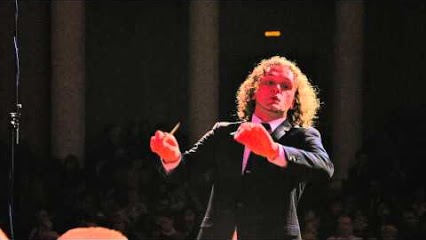
I. Moderato II. Tempo di Valse III. Scherzo: Vivace IV. Larghetto V. Finale: Allegro vivace "Russian Camerata" Chamber Orchestra Yuri Medianik - conductor
Antonín Dvořák's Serenade for Strings in E major, Op. 22, was composed in just two weeks in May 1875. It remains one of the composer's more popular orchestral works to this day.
The piece was premiered in Prague on 10 December 1876 by Adolf Čech and the combined orchestras of the Czech and German theatres. It was published in 1877 in the composer's piano duet arrangement by Emanuel Starý in Prague. The score was printed two years later by Bote and Bock, Berlin.
download: solidfiles anonfiles yandex 4shared mega filecloudio
4. Cello Concerto in B Minor Op.104 (Flv)
178 MB
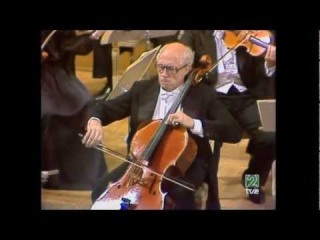
I. Allegro II. Adagio, ma non troppo III. Finale: Allegro moderato – Andante – Allegro vivo Mstislav Rostropovich – cello Boston Symphony Orchestra Seiji Ozawa – conductor
The Cello Concerto in B minor, Op. 104, B. 191, by Antonín Dvořák was the composer's last solo concerto, and was written in 1894–1895 for his friend, the cellist Hanuš Wihan, but premiered by the English cellist Leo Stern.
Leonard Rose was one of the greatest cellists of all time. Many of the recordings he made in the prime of his career continue to be viewed as the ultimate model of gorgeous cello playing. His greatest recordings have a timeless, unmannered quality that sound as fresh today as they did when they were first released.
download: uploaded anonfiles yandex 4shared solidfiles mediafire mega filecloudio
5. Stabat Mater (Mp4)
230 MB
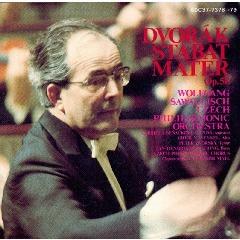
Cantata for Soloists, Choir and Orchestra op. 58 (B 71, 1876-77) "Stabat mater dolorosa" (quartet, chorus) "Quis est homo, qui non fleret" (quartet) "Eia mater, fons amoris" (chorus) "Fac, ut ardeat cor meum" (Bass, chorus) "Tui nati vulnerati" (chorus) "Fac me vere tecum flere" (Tenor, chorus) "Virgo virginum praectara", Chorus "Fac, ut portem Christi mortem", Duet (Soprano, Alto) "Infalmmatus et accensus" (Alto) "Quando corpus morietur" (quartet, chorus) Czech Philharmonic Chorus and Orchestra and soloists Wolfgang Sawallisch – conductor
Stabat Mater, Op. 58, is an extensive (cca 90 minutes) vocal-instrumental sacred work for soli (soprano, alto, tenor and bass), choir and orchestra based on the text of an old church hymn with the same name. The first inspiration for creating this piece was the death of the composer's daughter, Josefa. The work was written in several settings, with the final version completed in the end of 1877. The first performance took place on December 23, 1880 at the Jednota umělců hudebních (Association of Musical Artists) in Prague. The composition is usually performed in the Czech Republic during Easter time.
download: solidfiles mediafire mega filecloudio anonfiles 4shared yandex hostuje
Last Updated (Monday, 04 November 2013 13:41)








